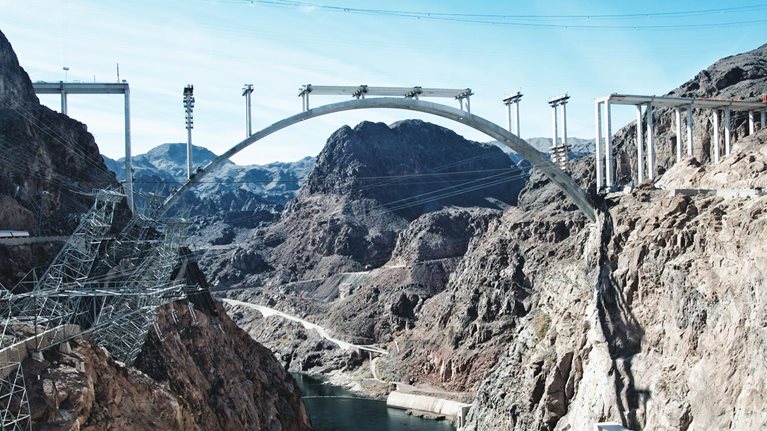Advances in technology will affect not only the composition and utilization of roads but also the speed and cost of their construction. Four major technology trends in particular will help enable new road realities:
Autonomous vehicles enable narrower lanes
By 2035, 15 percent of light vehicles sold are expected to be fully autonomous. As the share of vehicles capable of functioning without human drivers grows, driving precision is anticipated to increase dramatically. The additional accuracy could eliminate the need for lanes that are much wider than vehicles. Whereas traditional lanes are built wide enough to account for human error, usually between 3.50 and 3.75 meters wide (according to the European Commission), the width of future lanes could be reduced to 2.8 meters and still accommodate passenger cars and heavy-duty trucks. Roads dedicated exclusively to passenger cars could have lanes as narrow as 2.5 meters, making four-lane roads up to 4.0 meters narrower than they are today.
Construction automation increases productivity
Given the still significant amount of manual labor needed to build roads, automation is a promising opportunity to improve productivity in this low-margin industry. The initial surveying, for example, could be further automated through the use of lidar technology, reducing time and costs. Data from multiple sources could be fed into a digital representation of the physical asset—known as a digital twin. Such digital models allow contractors to visualize the entire lifecycle of a road, optimizing its performance. The use of 3-D machine-control excavation systems may serve as a proxy to gauge the potential from automation in the latter stages of road construction. These systems combine geolocation services with digital models to partially automate earthworks. Excavators equipped with such systems can carry out excavating or grading up to 30 percent faster than machines that don’t use a 3-D system.
Digitization leads to optimized utilization
Until around five years ago, road design and construction rarely used any form of digitization or analytics, but these technologies will significantly affect road design and construction in the near future. First, roads will evolve from being a passive medium to a system of measuring and guiding. Sensors, either embedded in the structure of newly constructed roads or positioned around existing roads, will be used to guide vehicles, which will enable them to drive closer together, potentially increasing lane capacity by up to 50 percent. This approach is currently being tested by authorities in China. Roads will also be able to communicate surface conditions—for example, friction levels due to water or cold temperature—to autonomous vehicles. Other types of sensors will be used for predictive maintenance, increasing the operational time of roads while reducing costs and the number of road closures.
Advanced materials improve durability
An increase in road use means that roads will need to be more durable. Newly constructed roads can be built using new construction materials (such as plastic) in their asphalt mix. This construction method can make roads up to 60 percent stronger than conventional asphalt roadways, making them better suited to accommodate more vehicles per kilometer of road. Existing roads will likely also have to undergo significant refurbishment to meet this new demand. Since these upgrades will be limited to a road’s top-most layers, they will be cheaper than building new roads from scratch.
Improved process flow decreases construction time and cost
By reducing the number of steps needed to build roads, and by making other steps obsolete, the four technology trends are expected to completely disrupt the traditional road-construction process, decreasing construction time and cost. The new process will likely consist of three key steps (exhibit):
Step 1: Data-driven needs assessment. Big data helps determine the size, timing, and location of the needs assessment, which lasts about one month.
Step 2: Design and implementation planning. Tech-enabled modeling/surveying leads to optimal road design and lasts about one month.
Step 3: Manufacturing and construction. The use of new materials and prefabricated parts means that manufacturing and construction starts before step two ends and finishes about three months after the process begins.

Together, these steps build a distinctive process that is expected to decrease the direct construction cost per lane-kilometer by roughly 30 percent by 2050, compared with today. This cost reduction is evident at each stage of the project and does not require a more costly initial outlay for the project.
Governments and construction companies should act strategically and early
Players that once seemed far removed from the road-construction space are already finding ways to take advantage of new opportunities, particularly the ones made possible by high tech. Governments and construction companies should take key steps to stay competitive in the race toward this next revolution in transport:
Establish standards for ‘smart roads.’ European governments could create alliances among relevant private-sector players to define the playing field for digitization.
Jump-start innovation through public procurement. European governments could fund pilot projects that focus on creative solutions for the construction of digital roads.
Capture new value pools through partnerships. Traditional construction companies could partner with tech companies, such as sensor manufacturers, or analytics companies to design the data-capture systems, which will be a growing source of value.
Leverage new financing models. New technologies also create opportunities for revenue generation. Road operators might explore how smart tolls or car-data monetization could be new revenue sources.
Build requisite skills and capabilities. Traditional players will need to build the capabilities required to play in the more advanced landscape of digital roads, whether it is the skills that, say, construction companies need to deploy automated machines, or the know-how that, say, public-works agencies need to develop standards related to car-data collection and management.
Advances in road construction are fast approaching, and the time to act is now. The learning curve will be steep, but the long lead time—potentially more than 15 years—for planning and creating the conditions for constructing these new roads gives stakeholders time to prepare. That said, the various advances will likely unfold along multiple time horizons. Advances in construction materials are imminent and yield gradual optimization potential. The digitization of roads will likely occur step by step as existing roads are upgraded and modularization in construction kicks in. By contrast, roads may become narrower only after a critical number of vehicles are fully autonomous. Additionally, many of these new features will require significant investments in brownfield upgrades of existing road infrastructure. The growing set of stakeholders in the road-construction landscape should start the collective conversation now in order to best prepare for success in the not-so-distant future.


